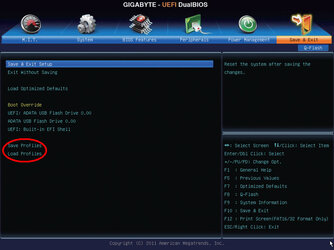- Joined
- Feb 18, 2002
I asked this ten years ago and didn't get an answer.
It sure would be useful set default BIOS / UEFI values in cases of a dead CMOS battery, it's a pain to get to a dead battery on some older laptops and I have mine setup to only boot with certain default BIOS / UEFI values changed.
It sure would be useful set default BIOS / UEFI values in cases of a dead CMOS battery, it's a pain to get to a dead battery on some older laptops and I have mine setup to only boot with certain default BIOS / UEFI values changed.
